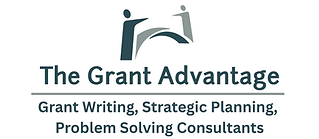
BOARD DEVELOPMENT
In the 2017 National Index of Nonprofit Board Practices, a study by Leading with Intent, only 51% of nonprofit organizations reported using formal tools to assess their Board of Directors. Assessing the Board of Directors is critical to measure the effectiveness of the BOD and to determine how the BOD can work to advance the mission of the organization. There are many free and easy-to-implement BOD assessment tools available.
Free Board of Directors Assessment Tools
This tool identifies the strengths and weaknesses of each board member on factors including fundraising success, leadership potential, level of participation, and more. The Executive Director and Board Chair each complete this assessment individually, and then share and discuss their results. This tool helps leadership take a big picture look at the BOD and assess where the BOD is strongest and where there is opportunity for improvement.
The McKinsey & Company Nonprofit Board Self Assessment Tool
This tool helps to assess BOD performance and assists with priority-setting for the future. Nonprofit managers and/or board members can complete this assessment. It is broken into three sections and takes 30 minutes to complete. Section 1: Performance of board on its core responsibilities looks at the vision and mission, strategy, and policy of the BOD. Section 2: Perceived importance of responsibilities for the next 1-2 years helps the BOD identify priorities. Section 3: Quality of board effectiveness enablers focuses on size and structure, composition, leadership, etc.
Individual Director Self-Assessment Tool
This tool helps board members measure and enhance their contribution to the BOD. There are three approaches to implementing this tool: a) voluntary completion; b) mandatory completion and follow-up for all directors; and c) mandatory completion and follow-up for end-of-term directors who are eligible for reelection. This tool asks members to rate factors on a 1-5 scale. Factors are broken down into sections that focus on Governance Role, Knowledge of the Organization and the Environment, and Effective Behavior and Relationships. The assessment concludes with open ended development questions that can be further discussed between members and the Board Chair.
Form to Evaluate Board Meetings
This simple evaluation tool was developed by the Center for Nonprofit Leadership at Adelphi University. The form can be completed by board members or directors following a board meeting. It will help the BOD assess the productivity of its meetings and generate suggestions for improvement.
Also developed by the Center for Nonprofit Leadership, this assessment can be completed by each board member. The easy assessment asks members to rate 30 statements on a scale of 1-5 (strongly agree-strongly disagree). Topics covered include how to best engage board members, issues the member would like to see prioritized, and the impact the member believes the organization should be trying to make.
Board Self-Evaluation Questionnaire
This questionnaire was developed by the Non-Profit Sector Leadership Program at Dalhousie University. It is broken down into five sections and should be completed by all board members. Section A: How well has the board done its job? asks members to rate seven factors on a scale of 1-5. Section B: How well has the board conducted itself? asks members to rate 12 factors on a scale of 1-5. Section C: Board's relationship with the Executive Director asks members to rate 11 factors. Section D: Performance of individual board members outlines 13 factors, and Section E: Feedback to Chair of the Board is an optional section that includes 12 factors. At the end of each section, the member adds up their total ratings to equal a score the corresponds to Excellent, Very Good, Good, Satisfactory, or Poor. The BOD can then determine the section average for Sections A, B, and C and discuss the results. Section D is only shared with the Executive Director. Section E is only shared with the Chair of the Board.
